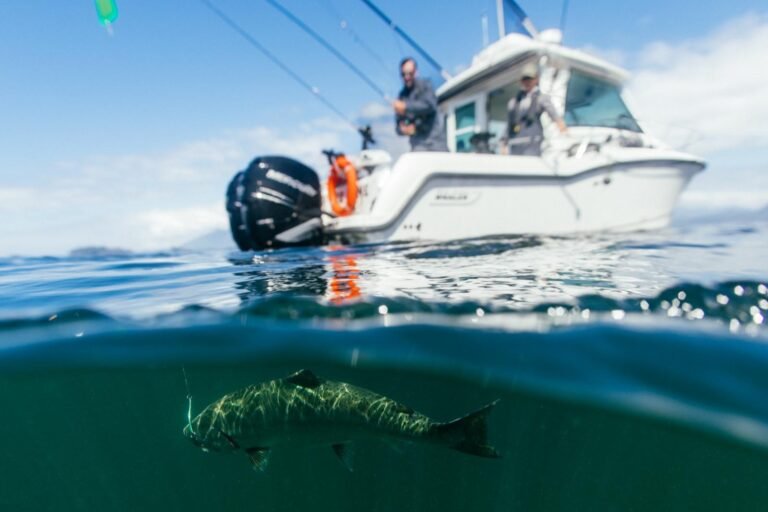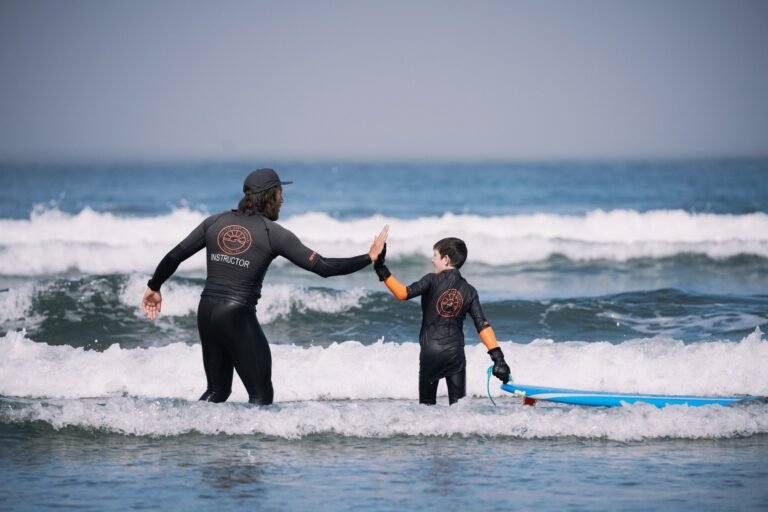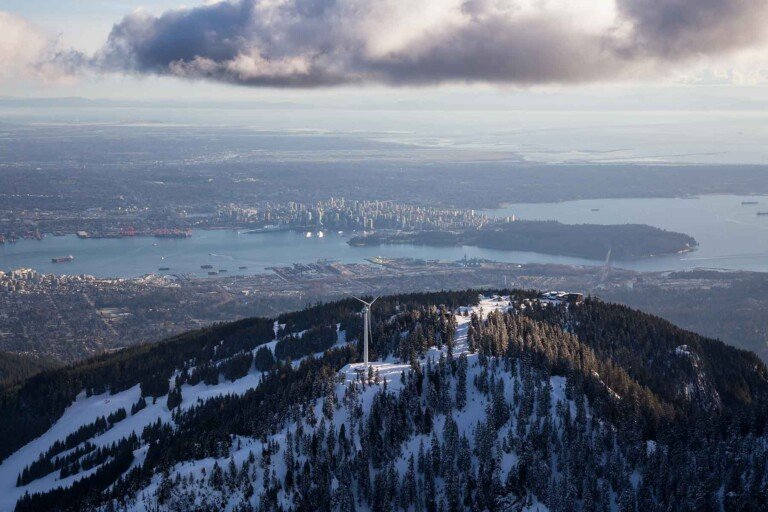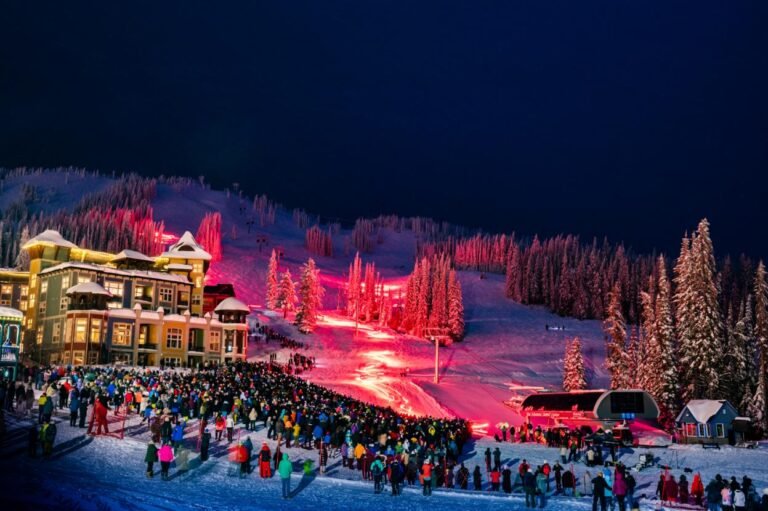Northern British Columbia provides some of the most remote and beautiful backcountry available to outdoor adventurers anywhere in the world. There are only two road access routes into the vast wilderness of the north; The Stewart-Cassiar Hwy 37 in northwest BC, and the Alaska Highway 97 in northeast BC. Communities along these highways provide access into the wilderness, by floatplane, boat, horseback, all-terrain vehicle, or by foot.
The Rocky Mountains cut a vast swath across the northern half of British Columbia. The Rocky Mountains and their foothills dominate the Northeast, comprising roughly 20 million acres (8 million hectares). There are no roads that cross the range north of Pine Pass (between Mackenzie and Chetwynd) until the Yukon border. The Northern Rocky Mountains are the largest roadless landscape south of the 60th parallel, as well as one of the richest and most varied intact large wildlife ecosystems remaining in North America. The area’s wildlife population is so prolific that this portion of the Northern Rockies has been dubbed the Serengeti of North America.
In the vast, highwayless gulf between the Alaska Highway, which begins in Dawson Creek at Mile 0, and Highway 37 to the west is an area that at its most expansive is 700 km wide and 1,200 km long. To put that in perspective, you could drop Switzerland into this region and not have road access. This is big country. Most people don’t venture more than a few miles off paved road. Some never make it off pavement at all, but if you do, a world of recreational opportunities awaits, whether you’re a weekend adventurer or a trail-hardened explorer. Come prepared, and enjoy the rich and varied wilderness, a place where people are scarce, but the exploits plentiful.
Adventure companies can facilitate your exploration of a lifetime, and horseback riding is one way to discover this massive undeveloped region. Fly-in access is provided from Fort Nelson on the Alaska Highway to the remote Turnagain River. In your rented jet boat you can jet to wherever the adventure takes you, you can fish for Arctic grayling in quite pools, hike from the Turnagain River into spectacular mountains, move from wilderness cabin to wilderness cabin, and even ride horses to another cabin on a remote wilderness lake.
Northern Rocky Mountains Provincial Park offers excellent opportunities for backcountry horseback riding. Riders should be experienced and prepared for wilderness travel, as there are no designated trails. The park is located approximately 56 miles (90 km) southwest of Fort Nelson. The Alaska Highway 97 runs along a portion of the northern boundary of the park. Access is by riverboat, horse, aircraft, and foot.
Stone Mountain Provincial Park allows horse riders into this northern Rocky Mountain wilderness of spectacular landscapes and incredible wildlife. For the more adventuresome explorer, backcountry routes lead to mountain valleys decorated with alpine meadows and lakes. The park is located at kilometre 595 of the Alaska Highway, approximately 140 kilometres west of Fort Nelson.
Denetiah Provincial Park provides excellent opportunities for backcountry horseback riding. An extensive alpine plain southwest of Denetiah Lake is an ideal location for hiking, horseback riding and wildlife viewing in a beautiful, remote wilderness setting. For the experienced backcountry adventurer, a portion of the Davie Trail, which extends from Fort Ware to Lower Post, travels through the park adjacent to the Rocky Mountain Trench. Riders should be experienced and prepared for wilderness travel, as there are no designated trails. Denetiah Park lies primarily west of the Rocky Mountain Trench and approximately 100 miles (160 km) upstream of Fort Ware along the Kechika River. There are no designated roads entering the area. The park is a remote wilderness area, and access is only by boat and air, or foot and horse along the Davie Trail from Lower Post.
Horseback riding is permitted in the Liard River Corridor Provincial Park, located along the most northerly progression of the Northern Rocky Mountains in northeastern BC. The Liard River Corridor encompasses the Liard River valley and uplands to the height of land as far east as the Scatter River. There are no developed trails at the park. Access to the park is by ATV, foot, horse or boat. On the south side of the Liard River, an old BC Hydro road crosses the Trout River and continues to the Grand Canyon of the Liard. This road provides horseback and foot access, but can be hazardous at the Trout River crossing. River boat access is via the Liard River. The nearest community is Liard River.
The mountainous, wilderness Wapiti Lake Provincial Park offers horseback riding, with horses permitted on the Wapiti Onion Trail that crosses through the park. This 19-mile (30-km) trail is located on the east slope of the Rocky Mountains. The first 12 miles (19 kms) of the trail to Wapiti Lake follows the north side of the Wapiti River and the shores of a few smaller lakes. A rest area where horses can be tied has been established at kilometre 19.2. Riders venturing into this park must be experienced, as the terrain is rugged and the weather can change quickly. Wapiti Lake Provincial Park is located about 38 miles (60 km) south of Tumbler Ridge, accessed via the Wapiti River Forest Service Road. Follow this road to kilometre 29 and turn right onto a road that leads to an old well site. The trail starts at the southwest corner of this site.
Horseback riding is allowed in Omineca Provincial Park, which includes 50 miles (80 km) of the Omineca River Valley, the Wolverine Range, the mountains northwest of Germansen Landing to Nina Lake, and the alpine ridges at the head of Evans Creek and Germansen Lake. The park is located approximately 114 miles (182 km) northwest of Mackenzie.
Heather-Dina Lake Provincial Park along the eastern edge of Williston Lake permits horse riding. Wilderness backcountry camping is allowed, but no facilities are provided. The park is located approximately 16 miles (25 km) north of Mackenzie.
If you’re looking for horseback riding, remote wilderness camping, abundant wildlife and excellent fishing opportunities, Klua Lake Protected Area provides all that and more. Klua Lake park is located east of the Prophet River, and east of Mile 240 of the Alaska Highway. There are no designated roads – the roads are designed for winter use only. Access is via trails leading up Adsett Creek, and via a northern trail from the Alaska Highway.
Located on the north shore of Williston Lake’s Peach Reach, Butler Ridge Provincial Park provides boat access to B.C.’s largest man-made lake, and offers excellent opportunities for wildlife viewing, fishing, hiking, and horse riding. The hiking along Butler Ridge is spectacular. The ridge itself extends 9 miles (15 km) south to north throughout the entire length of the park and is accessed via a trail on the park’s south side. Butler Ridge Provincial Park is located 16 miles (25 km) west of Hudsons Hope off Highway 29, with access by gravel road.
Horse riding is permitted at the Peace River Corridor Provincial Park, which protects a series of islands within the Peace River Canyon as well as scenic grasslands on the Peace River shoreline. There are no developed trails in the park, which is located 25 miles (40 km) southeast of Fort St. John along a section of the Peace River, 16 miles (25 km) upstream of the Alberta border. Road access is via Highway 97 and rural roads.
The remote, wilderness Dune Za Keyih Provincial Park, known for its diverse wildlife and spectacular scenery, permits horseback riding. The park is centred in the Rocky Mountain Trench, encompassing portions of the 250-kilometre Kechika River and two of its major tributaries: the Frog River, flowing from the Cassiar Mountains on the west side, and the Gataga River, merging from the northern Rockies to the east. The Kechika River is a provincial heritage river, and BC’s largest unlogged watershed. Dune Za Keyih is located south the Alaska Highway, between Denetiah Provincial Park to the northwest and Kwadacha Wilderness Provincial Park to the southeast.
Graham-Laurier Provincial Park provides excellent opportunities for backcountry horseback riding, but horseriders should be experienced and prepared for wilderness travel, as there are no designated trails. Situated west of the Continental Divide in the Rocky Mountains, the park is a remote wilderness area. Hunting, horseback riding, hiking, and fishing are the main activities. Christina Falls, located along the Graham River, is a spectacular special feature and is accessed by the Christina Falls trail; this undeveloped trail is 14 miles (22 km) long and is open to ATV and nonmotorized users. A number of other nonmotorized routes can be found throughout the park along Emmerslund, Needham and Horn Creeks, and the Graham River. Graham-Laurier Park lies north of the Peace Arm of Williston Reach, approximately 90 miles (145 km) northwest of Fort St. John. The Halfway/Graham Forest Service road provides the only motorized access to within 6 miles (10 km) of the southeast corner of the park.
There are limited opportunities for backcountry horseback riding in Horneline Creek Provincial Park, but riding is permitted. Riders should be experienced and prepared for wilderness travel, as there are no designated trails. Situated in the Kechika Mountains, near the Kechika River, this small park protects important habitat for mountain goat on the steep cliffs where Horneline Creek cuts though a large glacial terrace. The park is located about 81 miles (130 km) south of Lower Post and about 19 miles (30 km) north of Denetiah Provincial Park. Access is by river boat and foot. The Kechika River is the main access route to the park. Access to the Kechika River primarily occurs at Skooks Landing, near the community of Fireside, and involves a 156 miles (250 km) boat trip. The historic Davie Trail, which travels from Fort Ware to Lower Post, follows a portion of the Kechika River adjacent to the Rocky Mountain Trench.
Horse riding is allowed in the open grassland hillsides of Pine River Breaks Provincial Park, which protects the scenic landscape along the Pine River. The park is located on the north side of the Pine River, halfway between Chetwynd and East Pine River, near Sundance Lakes on Alaska Highway 97. Riders can access the park via a short ride on crown land from the Sundance Pit Road.
Horseback riding is permitted in Kakwa Provincial Park and Protected Area, which is popular for wildlife viewing, camping, hiking, fishing, and horseback trips. The park showcases iceclad mountains, extensive alpine meadows and a section of the Continental Divide. Trails are not marked or maintained, and facilities are limited. All visitors entering the park should be prepared and totally self-sufficient. Kakwa Provincial Park is located approximately 44 miles (70 km) north of McBride on the Yellowhead Highway 16, and can be accessed from McBride and Prince George. Access to the park is via the Walker Creek Forest Road.
Sikanni Old Growth Provincial Park protects exceptional old growth white spruce forests. Horseback riding is permitted, but backcountry recreation in the park is limited due to difficult access. During the summer months the surrounding area is impassable due to the muskeg. Sikanni Old Growth Park is located about 63 miles (100 km) southeast of Fort Nelson in the lower reaches of the Sikanni Chief River. There is currently no summer road access to the area. Winter roads only.
Redfern-Keily Provincial Park provides excellent trails into the area, which are open to horses, hikers, mountain bikes, dog sleds, and snowmobiles. One trail follows Nevis Creek and the Besa River to Redfern Lake, and a second trail follows the Sikanni Chief River to Trimble Lake. Another trail links Trimble Lake to the Besa River, completing a loop. The park includes Redfern, Fairy and Trimble Lakes, and the alpine basins and icefields of the Besa River and Keily Creek watersheds. Primitive campsites are found along both trails. There are approximately 26 sites along the Redfern Lake trail, seven of which are located within the park. Redfern-Keily is located in the Muskwa-Kechika Management Area, 50 miles (80 km) west of the Alaska Highway, approximately 156 miles (250 km) northwest of Fort St. John.
Horseback riding is permitted in the Elephant Ridge addition to Gwillim Lake Provincial Park, located in the picturesque Rocky Mountain Foothills on Highway 29, a 30-minute drive from Chetwynd and Tumbler Ridge.
Horse travellers must be well prepared and experienced in the backcountry Finlay-Russel Provincial Park, as this park is very remote and isolated. Visitors should be self sufficient and have appropriate maps. The park consists of an 53-mile (85-km) corridor along the Finlay River between the Fox River confluence, immediately west of Kwadacha village (Fort Ware) and the Toodoggone River confluence. The Park area also includes 12.5 miles (20 km) of the Upper Pelly Creek Valley and the northern end of the Russel Range. The Finlay-Russel Provincial Park protects a section of the First Nation trail from Kwadacha to Caribou Hide and the Stikine country. There is limited road access from Ft. Ware. Mackenzie is the closest community, but is still a day’s drive on rough roads.
Pine Le Moray Provincial Park, tucked amidst the rugged Hart Ranges of the Rocky Mountains, allows horseback riding, but no trails are developed or maintained. Pine Le Moray Provincial Park is located on the east and west slopes of the continental divide, 44 miles (70 km) southwest of Chetwynd and 31 miles (50 km) northeast of McLeod Lake. The park’s northern and northwestern boundary is adjacent to Alaska Highway 97 near Pine Pass. The park can also be accessed via a forest service road on the east side along Le Moray Creek.
Riders should be experienced and prepared for wilderness travel in Ekwan Lake Protected Area, as there are no designated trails. Ekwan Lake is located approximately 109 miles (175 km) southeast of Fort Nelson and 22 miles (35 km) west of the Alberta border. There are no roads to the park during the spring, summer, and fall seasons. Temporary ice roads are built during winter.
Horseback riders venturing into provincial parks are required to obtain a letter of permission from BC Parks.





